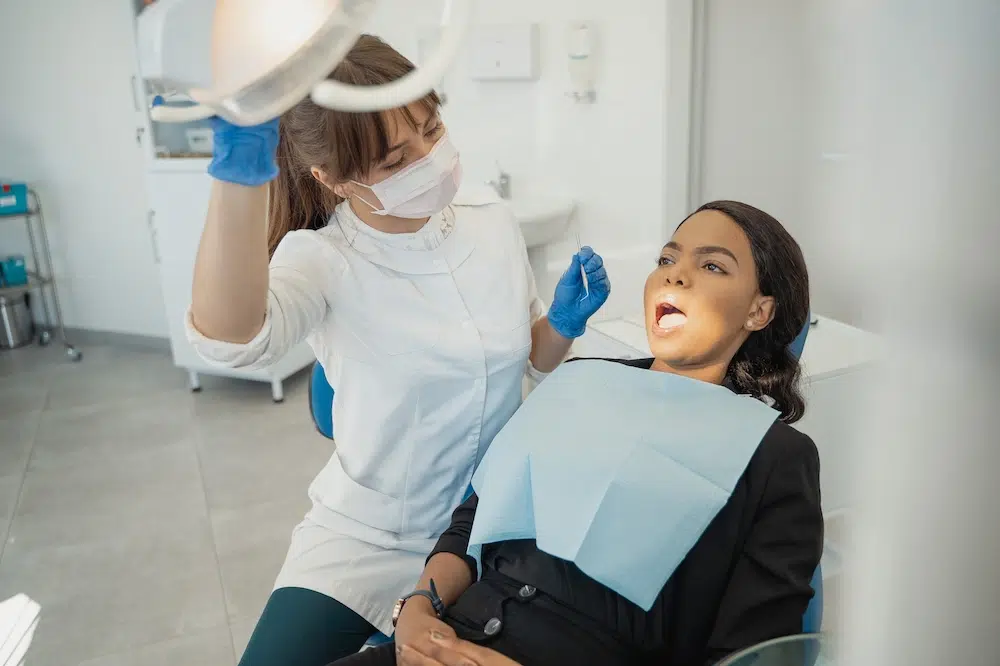
How Does The Tounge Support Proper Arch Formation?
The human tongue, a seemingly unassuming muscle, holds within it a world of extraordinary significance in shaping oral health and speech development.
Beyond its role in taste and communication, the tongue plays a pivotal part in supporting proper dental arch formation.
From the earliest stages of life, this dynamic muscle exerts its influence, aiding in the growth and alignment of teeth while contributing to the creation of a well-formed palate.
By exploring the multifaceted ways in which the tongue impacts arch development, we uncover a fascinating interplay between anatomy, function, and the crucial role it plays in maintaining oral harmony.
Tongue Posture & Alignment
The correct posture and alignment of the tongue play a significant role in supporting proper dental arch formation.
Ensuring a proper resting position of the tongue against the roof of the mouth is essential for the development of a well-formed palate and the alignment of teeth.
Correct Tongue Resting Position
The correct tongue resting position involves gently placing the tongue against the roof of the mouth, with the tip positioned just behind the upper front teeth.
This posture aids in maintaining the width and shape of the upper dental arch, promoting proper alignment of the teeth and providing stability for the surrounding oral structures.
Tongue’s Role in Arch Development
During infancy and early childhood, the tongue’s pressure against the palate influences the natural growth and expansion of the hard palate.
This process creates enough space for the eruption of permanent teeth in a well-formed dental arch.
The tongue’s active involvement in swallowing and speech movements also contributes to the proper development of oral structures.
Impact of Incorrect Tongue Posture
Incorrect tongue posture, such as resting the tongue on the lower teeth or against the back of the mouth, can have detrimental effects on arch formation.
Improper tongue positioning can lead to narrow dental arches, misalignment of teeth, and difficulties in speech production.
Moreover, it may contribute to habits like tongue thrusting, thumb sucking, and mouth breathing, further exacerbating dental issues.
Tongue Exercises & Habits
Tongue exercises and habits play a vital role in promoting proper tongue posture and strengthening the tongue muscles.
These exercises can help correct improper tongue positioning, address harmful habits, and contribute to overall oral health and arch development.
Tongue Thrust Exercises
Tongue thrust exercises are designed to retrain the tongue to swallow correctly.
These exercises help break the habit of pushing the tongue against the front teeth during swallowing, which can negatively impact dental arch alignment.
Correcting tongue thrust can assist in maintaining proper arch formation and preventing orthodontic issues.
Avoiding Harmful Habits
Certain oral habits, like thumb sucking or prolonged pacifier use, can disrupt tongue posture and arch development.
Encouraging children to discontinue these habits can facilitate proper tongue alignment and promote healthy arch formation.
Tongue Strengthening Activities
Strengthening the tongue muscles can be achieved through various exercises, such as tongue presses against the roof of the mouth, tongue lateralization (moving the tongue from side to side), and tongue elevation exercises.
Strong tongue muscles contribute to better support for dental arches and overall oral function.
Oral Myofunctional Therapy
Oral myofunctional therapy is a specialized approach that targets the muscles of the mouth, including the tongue, to address issues like improper swallowing, speech difficulties, and malocclusions.
This therapy can help individuals of all ages improve tongue posture and achieve optimal oral health and arch formation.
Tongue-Tie & Arch Formation
Tongue-tie, a condition where the lingual frenulum restricts the tongue’s movement, can significantly impact arch formation and overall oral function.
Understanding the implications of tongue-tie on dental health is crucial in determining appropriate treatment and support for proper arch development.
Understanding Tongue-Tie Condition
Tongue-tie occurs when the thin strip of tissue (frenulum) that connects the underside of the tongue to the floor of the mouth is shorter than usual, limiting the tongue’s range of motion.
This condition can be present from birth and may affect feeding, speech, and dental development.
Effects on Arch Development
Tongue-tie can lead to difficulties in breastfeeding for infants, affecting their oral muscle development and potentially leading to arch formation issues as they grow.
The restricted tongue movement can also contribute to improper tongue posture and swallowing patterns, influencing dental arch alignment and speech development.
Treatment Options & Implications
When tongue-tie negatively impacts oral health and arch development, a minor surgical procedure called a frenectomy may be considered to release the restrictive tissue.
Early intervention can help prevent potential dental complications and support proper arch formation.
Assessing Tongue-Tie Severity
Healthcare professionals, such as pediatric dentists, lactation consultants, or speech therapists, can assess the severity of tongue-tie and its impact on arch development and overall oral health.
A comprehensive evaluation is essential to determine the most appropriate treatment approach for each individual case.
Proper Breathing
Proper breathing, particularly through the nose, plays a vital role in supporting oral health and dental arch formation.
Nasal Breathing Benefits
Nasal breathing filters, warms, and humidifies the air before it reaches the lungs, promoting optimal respiratory function.
This breathing method also helps maintain proper oxygen and carbon dioxide exchange, positively influencing overall health, immune function, and quality of sleep.
Tongue’s Role in Airway
The tongue’s resting position against the roof of the mouth and its proper function during swallowing contribute to maintaining a clear airway.
When the tongue is well-positioned, it provides essential support to the upper arch, preventing it from collapsing inward and obstructing the air passage.
Impact on Arch Alignment
Nasal breathing and correct tongue posture are closely linked to proper arch alignment.
Mouth breathing, on the other hand, can lead to changes in facial structure, narrow dental arches, and misaligned teeth.
Consistent nasal breathing, combined with correct tongue resting posture, supports the natural growth and development of well-formed arches.
Breathing Exercises for Oral Health
Certain breathing exercises and techniques can help individuals transition from mouth breathing to nasal breathing.
These exercises aim to improve airway function, strengthen the tongue and facial muscles, and promote better arch alignment for enhanced oral health.
Collaboration with Dental Professionals
Collaboration between patients, dental professionals, and specialists is essential for comprehensive arch formation support and overall oral health.
Understanding the roles of orthodontists, myofunctional therapists, and speech therapists in this process can optimize treatment outcomes.
Orthodontist’s Role in Arch Formation
Orthodontists are experts in diagnosing and treating malocclusions and dental arch alignment issues.
They design customized treatment plans, which may include braces, aligners, or other orthodontic appliances, to correct arch irregularities and ensure proper teeth alignment.
Myofunctional Therapy Benefits
Myofunctional therapists focus on addressing improper oral habits and tongue muscle function.
By incorporating myofunctional therapy alongside orthodontic treatment, patients can achieve more stable and lasting results, as well as improved overall oral function.
Coordinating with Speech Therapists
Speech therapists play a crucial role in correcting speech disorders related to tongue positioning and oral muscle function.
Collaborating with speech therapists can be beneficial for patients who require additional support in improving tongue posture and speech patterns during their orthodontic and myofunctional treatment.
FAQs
1. Can tongue exercises help support arch formation?
Yes, tongue exercises can help support arch formation. Tongue exercises can strengthen the tongue muscles, promote correct tongue positioning against the roof of the mouth, and contribute to proper arch alignment.
2. What is the role of the tongue in arch formation?
The role of the tongue in arch formation is to exert pressure against the palate during infancy and early childhood, influencing the natural growth and expansion of the hard palate.
Proper tongue posture and swallowing patterns contribute to maintaining the width and shape of the upper dental arch, promoting proper alignment of teeth, and providing stability for the surrounding oral structures.
Conclusion
A harmonious interplay of factors contributes to proper dental arch formation and overall oral health.
Understanding the significance of correct tongue posture, nasal breathing, and the collaborative efforts of dental professionals can pave the way for optimal arch alignment and improved oral function.
By emphasizing the role of the tongue in supporting the arch formation and promoting healthy breathing habits, individuals can unlock the potential for a confident smile and enhanced well-being throughout their lives.



